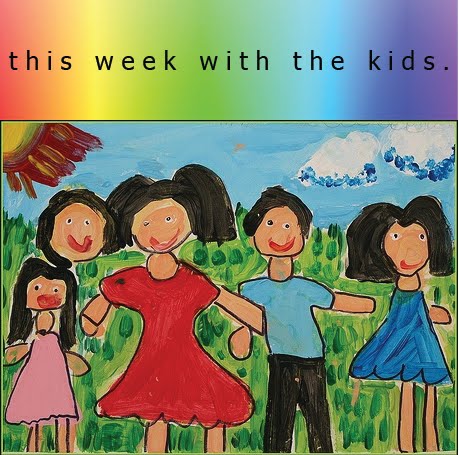Families displaced in South Sudan by conflict and floods survive in makeshift shelters.
April 16 2015. Shelter BOX. Disaster relief charity.
"There is never a series of little packages of time given to you in life labelled: 'TIME FOR AN ILLNESS, TIME FOR A WEDDING, TIME FOR A DEATH, TIME FOR A BROKEN LEG, TIME FOR CRUSHED RIB MUSCLES,... TIME FOR MUMPS, TIME FOR THREE CHILDREN WITH MEASLES ALL AT ONCE, TIME FOR THE HOUSE TO BURN DOWN, TIME FOR A DISAPPOINTMENT.' You can't face the sickness, the operations, the broken arms and legs, the serious diseases, the disasters, or even the headaches, unless you realise there is never a convenient time set aside for joy or sorrow, protected by neat little walls so that the two things will not mingle and spoil each other." WHAT IS A FAMILY? Edith Schaeffer. p.103.
So true! Tomorrow my sister-in-law goes in for brain surgery to remove a tumour on her optic nerve, my mother-in-law had a stroke yesterday and today my daughter was over-joyed to find she had been written up in the newspaper for the charity she began. What a mixture of emotions and conversations!
The truth is, we are limited and can't meet all the varied needs of another person. I was fully aware of this fact this afternoon speaking on the phone with one upset adult child.
As life continues to run along, you can only give as much care as is possible in the circumstances. We have to be creative, but caring for our family when sick or hurting doesn't need to be complicated.
Examples of Care
Some people are 'naturals'. It's automatic to them. They effortlessly move from one family needy situation to the next. But for the rest of us there are lots of simple things we can do or remember to do when we are caring for a family member in need.
The Patient in Bed at Home:
Change the sheets or at least the pillowcase, daily.
Smooth the wrinkles in the sheets and straighten up the bed.
Wash the patient's face or feet, to refresh them.
Any Patient or Troubled Person:
Massage their face and head, hands, feet or legs with a natural smell cream.
Regardless of age read a humorous story to them.
Bring different drinks of different colour, in different glasses or cups.
Bring food on a tray with a flower, leaf, toy, rock, candle, photo as decoration.
On a plate create a person out of vegetables - cherry tomato head, carrot sticks arms and legs, celery body - to make them smile.
If the patient is a child, bring a tray to lean on and make a puzzle, colour in, cut out and glue on.
If an adult, bring the tray with a load of old photos or photo albums to look through.
The Patient in Hospital:
Bring physical objects into the hospital to broaden their thoughts and open up conversations to take them 'outside' the hospital room.
For example - takeaway coffee or cake from their favourite cafe, assorted autumn leaves...
The point so often is simple, the patient needs a break from where they are, be that they are physically ill in the sick bed or emotionally overwhelmed and in pain in the chair. They need to be taken on a short 'holiday' to some place else, where there is vibrant life or peaceful beauty... You know the person so you need to think creatively about what the patient needs and how to provide that little 'holiday'.
A Continual Practice
"The knowledge of what is necessary for basic care ... should be absorbed through years of living in a family. If a person has never had good, old-fashioned, motherly nursing, nor heard any details of what can be done other than giving the medicine, then how can he or she know what is not being done and what the children, husband, wife, or grandparents are missing?" p.95.
General care and compassion should be regular elements throughout the 'normal' or 'sick-free' times in family life.
"On the human level, children are meant to learn how to comfort others with the same kind of comfort they have received in their own pain, sickness, and deep troubles..... A family should be the place where comfort is experienced and understood, so that the people are prepared to give comfort to others. Comfort should be related to the word family." p.111.
THISWEEKWITHTHEKIDS ~ does your family think of home as a place to come to, to be sheltered when life is 'stormy'? "The togetherness will not have been perfect, the care will not have been flawless, and mistakes will have been made," p.118. But as you practice caring for your family when they are troubled or sick, as well as helping them recover emotionally or physically, you are equipping and showing them how to care for others, and creating memories within these tough times that are filled with love, happiness, connection, security, kindness and so much more.
Cathy


No comments:
Post a Comment